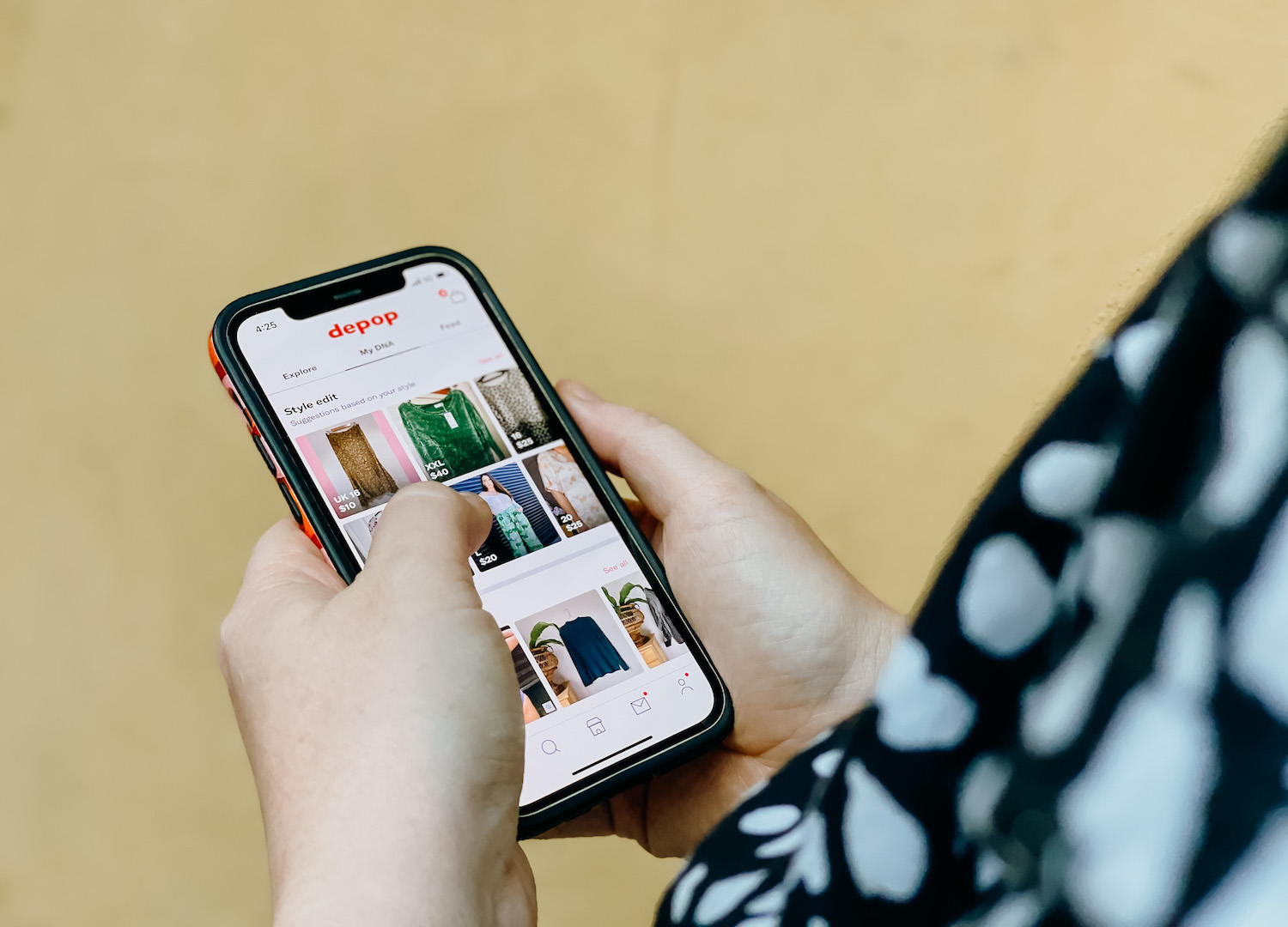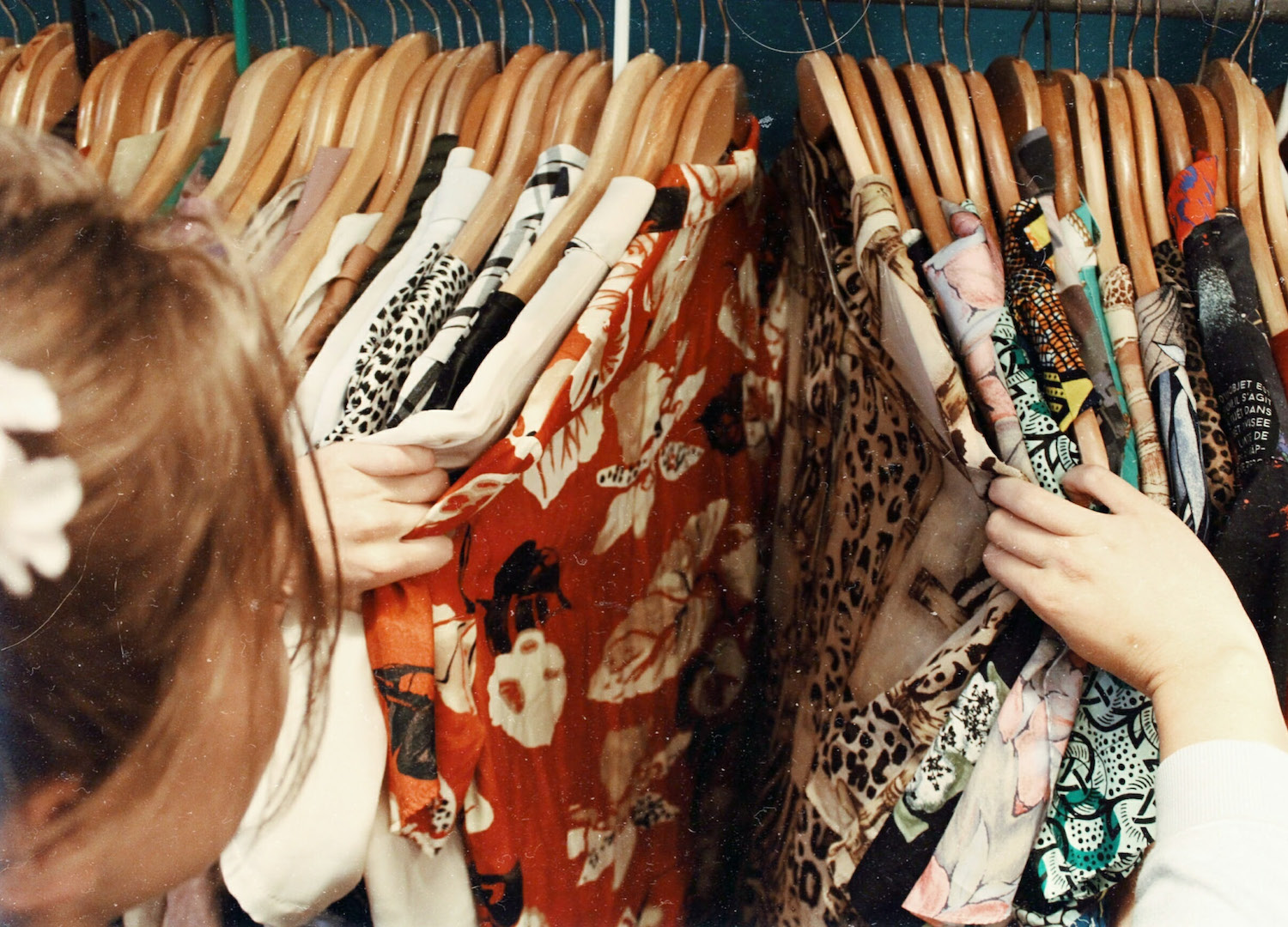
Depop Generation: How the Rise of Resale Is Changing the Way We Shop
words WALTON WONG
The online resale industry is predicted to explode over the next five years – almost tripling its worth – thanks to apps like Depop. But as it grows ever popular with Generation Z, it brings with it issues rooted in gentrification, as Walton Wong explores.
Depop – the trendy, secondhand e-commerce app you’re likely to have encountered online – combines the best facets of Instagram, Pinterest and eBay, all while providing consumers with an ethical way to shop.
Offering the social aspect of Instagram (with the ability to follow and interact with your favourite creators), the aesthetics of Pinterest and the purchasing power of eBay, the app is a popular, entertaining and unique way of shopping that fashion-forward teens have embraced with gusto.
And it’s not surprising – as the internet has grown up, so too has the generation that was raised alongside it. Born into the age of Instagram, TikTok and Twitter, Gen Z have witnessed content and trends moving fast and fashion moving even faster. In one second, something can be hot and the next it’s not. But as more and more are realising, this fast-paced, consumer-driven cycle promotes overproduction, frequent consumption and short-lived garment use… and it’s just not sustainable.
Historically, fashion trends could last up to a decade with most major brands dropping four seasons per year – corresponding with the actual seasons. In recent years, however, trend cycles have drastically condensed as fast-fashion brands produce clothes at lightning-fast rates, making multiple drops in a single month.
In recent years, however, trend cycles have drastically condensed as fast-fashion brands produce clothes at lightning-fast rates, making multiple drops in a single month.
The fact that this swing shows no sign of slowing down, coupled with growing scrutiny of the ethical and environmental impact these polluting supply chains have, many Zoomers have started to search for different ways of being fashion-forward – while also being more sustainable.
Although buying solely from sustainable brands may be a great sentiment, size inclusivity is often problematic, the price point is high and the aesthetics can leave something to be desired by the Gen Z eye. So, they’ve started buying secondhand, causing apps like Depop to skyrocket in popularity.
Trawling through Depop for secondhand goodies can be a much more ethical and sustainable way to shop, but it’s also a privilege. Once upon a time you could walk into your local Vinnies or Salvos to find a cute outfit. And while this is still possible, the chances of finding an outfit at a reasonable price is getting harder and harder. Price aside, finding something name-brand, well-made or trend-driven is even harder. And this is becoming more and more common as Depop sellers around Australia (and the world) bulk buy the better pieces and resell them on the app for upwards of five times their original value.

photo VIA UNSPLASH
It’s a big issue, especially since thrift shopping for low-income families isn’t a choice, it’s a necessity. These price hikes have essentially gentrified thrift stores, making them inaccessible to the people who have always relied on them.
Unsurprisingly, many garments making their way into thrift stores today are near new. They’re also typically from fast-fashion brands who simultaneously manufacture garments that aren’t built to last and use materials like polyester that take up to 200 years to decompose. And when you consider that a staggering 330,000 tonnes of textiles are imported into NSW each year, and about 305,000 tonnes are discarded, with only 800 tonnes recycled, that’s a lot of plastic.
Only a few years ago, Australians consumed 23 kilograms of textiles per person, per year, but with fast-fashion brands ruling our sartorial world, that number has increased to almost 31 kilograms. In addition, 240,000 tonnes of textiles go into landfill each year, and only 62,000 tonnes are exported for reuse by charities – bringing with it its own issues overseas. It’s clear that Aussie eyes have grown too big for their wardrobes, many throwing away near-new garments to make room for more clothes.
It’s no wonder why the generation that will inherit the Earth are choosing to shop secondhand on apps like Depop. Yes, Depop has its detractors but at the end of the day, shopping secondhand is still, arguably, the most sustainable way to shop (other than, obviously, not shopping at all).
The resale of preloved items is expected to grow from $15 billion to $47 billion by 2025, overtaking traditional thrift and donation.
Through apps like Depop, clothing is being circulated in a more sustainable and valued way. It allows consumers to reduce their environmental footprint; it provides small business owners with the opportunity to gain income without the outlay of a bricks-and-mortar store; and it provides the average person the means to make some extra pocket change from their preloved, one-of-a-kind, vintage, upcycled or self-made goodies. But most importantly, the reason the app has risen to the top, and why users continue to come back, are the buyers and sellers on the platform who’ve created a community that’s innovative, exciting and passionate about making fashion more sustainable while still looking fabulous.
So, while simply shopping through these apps isn’t going to change the fashion industry overnight, it is a step in the right direction and potentially the way of the future. They’re paving the way for exponential industrial growth. According to the latest thredUP Resale Report, the resale of preloved items is expected to grow from $15 billion to $47 billion by 2025, overtaking traditional thrift and donation. The report goes on to say over 36 million people resold clothes in 2020 for the first time and 33 million people bought secondhand apparel for the first time.
If you’re one of those people who are yet to take the plunge, Depop can be daunting. Here are a few tips to get you started:
- Only buy clothes you really want now and you’ll wear for years to come – always ask yourself, “Do I really need this?”
- Make use of filters: minimise the time you spend searching for things.
- Buy from local sellers, and if safe and possible, try to use the ‘pick up’ option to reduce your carbon footprint through postage.
- Try to avoid impulse purchases: just because it’s secondhand or a seller is having a sale, doesn’t mean you have to buy.
- Many “designer” items on these sites may not be genuine: always ask the seller for clear photos of the labels/receipt and details that might indicate its authenticity.
- Beware of sellers selling items firsthand: a lot of those are wholesalers who mark things up, which is not sustainable.
Happy Depoping!

